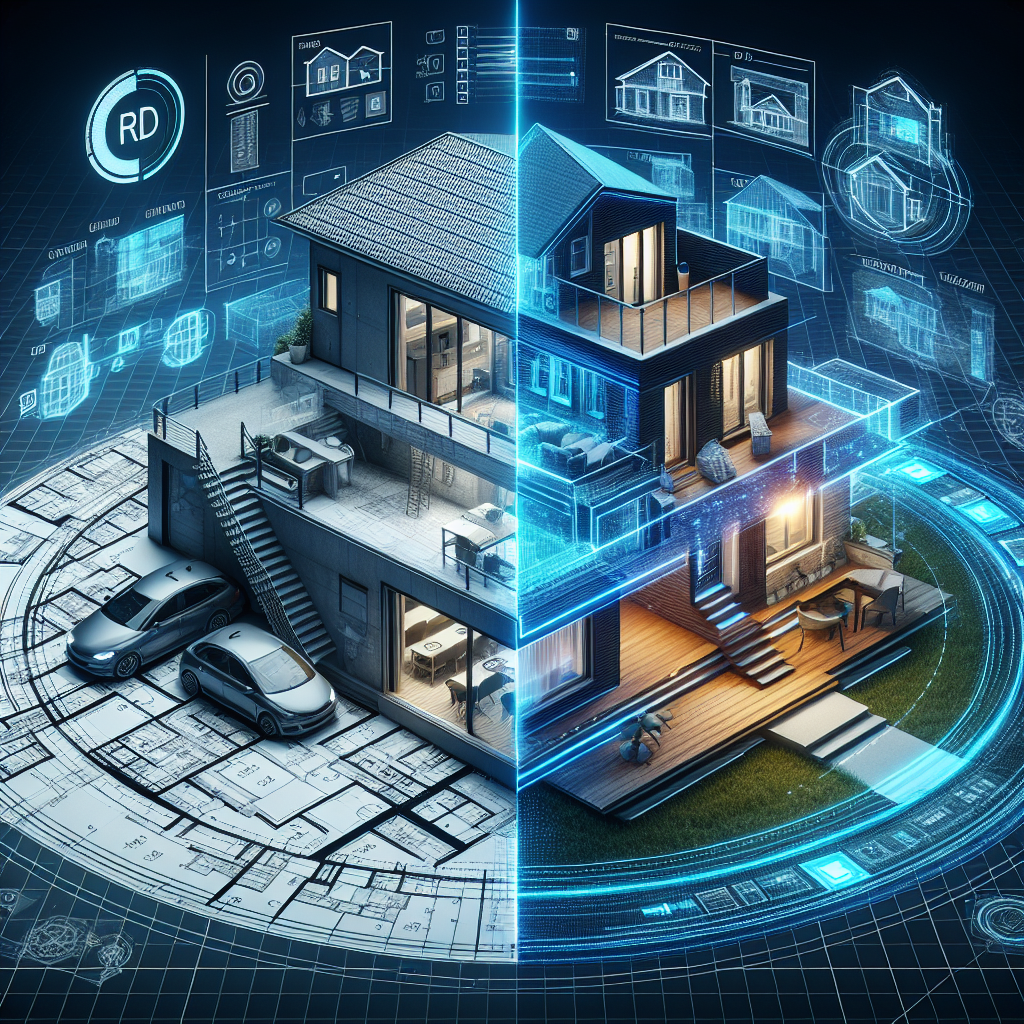Revolutionizing Real Estate: The Impact of AR on Visualization
The real estate industry has always been at the forefront of innovation, constantly looking for new ways to enhance the customer experience and streamline processes. In recent years, one technology has emerged as a game-changer in the industry: Augmented Reality (AR). AR has the ability to revolutionize the way we visualize real estate properties, allowing potential buyers to experience properties in a whole new way.
AR technology overlays digital images onto the real world, creating an immersive experience that can enhance the way we view and interact with real estate properties. By using AR, real estate agents can provide potential buyers with a virtual tour of a property, allowing them to view different rooms, layouts, and features in real-time. This not only saves time for agents and buyers, but also gives buyers a more realistic sense of what a property looks like before they even step foot inside.
One of the key benefits of AR in real estate is its ability to enhance visualization. Traditional methods of showcasing properties, such as photos and videos, can only provide a limited view of a property. With AR, potential buyers can interact with a property in real-time, exploring different rooms and features as if they were actually there. This level of immersion can help buyers make more informed decisions about a property, leading to quicker sales and more satisfied customers.
In addition to enhancing visualization, AR can also improve the overall buying experience for customers. By providing virtual tours of properties, buyers can save time and money on in-person visits, allowing them to narrow down their choices more efficiently. This can be especially beneficial for out-of-town buyers who may not be able to visit properties in person. With AR, customers can view properties from anywhere in the world, making the buying process more accessible and convenient.
Another key advantage of AR in real estate is its ability to showcase properties in a more dynamic and engaging way. By using AR, real estate agents can create interactive experiences that allow potential buyers to customize and personalize properties to their liking. For example, buyers can choose different paint colors, furniture layouts, and décor options to see how a property can be transformed to suit their tastes. This level of customization can help buyers envision themselves living in a property, making it more likely that they will make an offer.
AR can also help real estate agents attract more potential buyers to properties. By offering virtual tours through AR technology, agents can reach a wider audience of buyers who may not be able to attend open houses or showings in person. This can help properties sell faster and at a higher price, as more buyers are able to view and experience the property through AR. Additionally, AR technology can be used as a marketing tool to showcase properties in a more engaging and interactive way, attracting more attention from potential buyers and generating more leads for agents.
While AR technology has the potential to revolutionize the real estate industry, there are still some challenges and limitations to consider. One challenge is the cost of implementing AR technology into real estate practices. While the technology has become more affordable in recent years, it can still be expensive for some agents and agencies to adopt. Additionally, there may be a learning curve for agents who are not familiar with AR technology, which can slow down the adoption process.
Another challenge is the limited availability of AR-compatible devices and platforms. Not all buyers may have access to AR technology, which can limit the reach of virtual tours and experiences. However, as AR technology becomes more mainstream and affordable, this limitation may become less of a concern.
Despite these challenges, the impact of AR on visualization in real estate is undeniable. By providing immersive and interactive experiences, AR technology has the potential to revolutionize the way we view and experience properties. From enhancing visualization and customization to attracting more buyers and streamlining the buying process, AR has the power to transform the real estate industry for the better.
FAQs
1. How does AR technology work in real estate?
AR technology overlays digital images onto the real world, creating an immersive experience that allows potential buyers to view and interact with properties in real-time. By using AR, real estate agents can provide virtual tours of properties, showcasing different rooms, layouts, and features to potential buyers.
2. What are the benefits of using AR in real estate?
AR technology can enhance visualization, improve the buying experience for customers, showcase properties in a more dynamic way, attract more buyers, and serve as a marketing tool for agents. By providing immersive and interactive experiences, AR can help properties sell faster and at a higher price.
3. What are the challenges of implementing AR technology in real estate?
One challenge is the cost of implementing AR technology, as it can be expensive for some agents and agencies to adopt. Another challenge is the limited availability of AR-compatible devices and platforms, which can restrict the reach of virtual tours and experiences.
4. Is AR technology widely used in the real estate industry?
While AR technology is becoming more popular in the real estate industry, it is not yet widely adopted by all agents and agencies. As the technology becomes more affordable and accessible, more agents are likely to integrate AR into their practices to enhance the customer experience and streamline processes.
